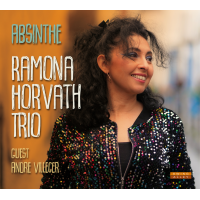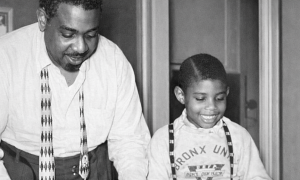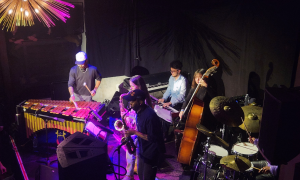Home » Jazz Articles » Book Review » The European Real Book
The European Real Book
 The European Real Book
The European Real Book"C" version
Sher Music
Spiral bound; 423 pages
ISBN: 1883217245
2005
It's a mirror opposite in many ways of the original Real Book, yet captures the excitement and feel of it like no other version has since.
The European Real Book is a long-overdue concept executed exceptionally well in this 184-song collection. That's due in no small part to a large number of songs by obscure composers and the ability to hear more than 100 of the pieces as originally recorded online at the Sher Music Company's web site. It will never match the original as a "bible" of essential tunes that shows up in seemingly every classroom and club, but the quality and quantity of the mostly modern traditional and fusion songs is unmatched in today's fakebook market.
The original Real Book featured such a quality lineup of songs and features that stores and musicians simply ignored the fact it was an illegal compilation by Berklee College of Music students during the 1970s. Sher's distributor, Hal Leonard Corp., finally published a legal version in 2005. Two additional collections of classic and modern songs, a Latin compilation and an "easy" version are among the sequels in the Real Book series. But the excitement wasn't the same due to competition with fakebooks from other publishers offering more content and/or lower prices, plus novelties such as ultra-compact size. (The original Real Book exists in a "pocket" version I've seen only in Europe, by the way, and it's a gem. Illegal PDFs of it are also traded widely on the internet.)
In contrast to the original, The European Real Book is legal, squeaky clean in appearance and anything but a compilation of "must-know" tunes. Publisher Chuck Sher says he was unfamiliar with the vast majority of the songs in The European Real Book, compiling them from suggestions made by musicians well-known and obscure throughout the continent. So while artists like Nguyen Le, Allan Holdsworth and Niels-Henning Orsted Pedersen are represented, names like Jacob Karlzon and Florian Ross often contribute the most interesting pieces.
"Perhaps because the education of many European jazz musicians includes classical music, as well as jazz, the compositional depth of many of the tunes included here is well beyond that of the typical jazz song," Sher notes in the book's introduction.
That depth, when combined with a lower overall degree of familiarity with the songs, make this collection less suitable for beginners. Still, there's easy pieces to be found with a little browsing such as "In A Silent Way," published both as Miles Davis recorded it and an alternate "rehearsal version" from The Complete In A Silent Way Sessions. The latter is more complex in melody and chording, making it an ideal for learning how a composition can be expanded upon.
The online song files take the learning experience to the next level, even if they are streaming only (no downloads) and must be selected one at a time (a "play all" option would be great simply from a listening standpoint). Having the originals, instead of somebody's cover, makes hitting the nuances a cinch. The only letdown is some of the files are abbreviated to about a minute, just enough to allow the listener to hear to head and overall feel of the song. While sufficient for learning purposes—and it'sunderstandable that some artists don't want to "give" full songs away—it's not as fun as the whole thing.
The lead sheets are easy to read with good notation, bypassing the calligraphy of the first versions of the "old" Real Books (replicated with a computer font in the "legal" update). Performance notes often appear in small type at the end and assume the user has at least some familiarity with fakebook terminology ("Breaks are ignored for solos except in the final bar of letter D."). Separate melody and rhythm lead sheets are printed for a number of the more complex songs. I can't vouch for the accuracy of the scores, but it seems safe to assume they're closer to the "corrected" versions in the modern Real Book rather than the occasionally erroneous transcriptions in the "illegal" edition.
The most significant weakness is organization—some songs aren't as easy to find as they could be. There are three songs by drummer Bill Bruford's Earthworks from around the year 2000, for instance, but only two are listed under his name in the book's composer index. The second, "A Part And Yet Apart," took an extra minute to locate in the "P" rather than the "A" section. The third, "Tramontana," is found in the title-by-title index and at the web site.
The first song under his name, "Revel Without A Pause," reveals another organizational weakness. The drummer is simply told to play an up-tempo 5/4 high hat swing throughout, which is pretty much all one hears on the streaming MP3 aside from a brief solo near the end. But it turns out the end of the book contains a "drum appendix" for a handful of songs with complex rhythms, including this one but this isn't noted on the lead sheet of the song and the index only cryptically mentions a "sample drum parts" section at the end of the listing.
These aren't major hitches and any reasonably intelligent person will eventually figure things out, but it's an unnecessary part of the learning curve. To its credit, most of the supplemental aspects of the are well presented, including an opening two-page spread covering music basics and nearly 80 chord variations.
Obviously The European Real Book isn't likely to be anyone's ideal first fakebook, but it may be the best second choice for many jazz players not seeking a specific collection such as Latin or Broadway tunes. A collection of modern U.S. compositions is still sorely lacking, but this fills much of that gap in terms of presenting current styles and thinking, while offering additional insight thanks to the musical accents of artists in a range of countries.
Tags
PREVIOUS / NEXT
Support All About Jazz
 All About Jazz has been a pillar of jazz since 1995, championing it as an art form and, more importantly, supporting the musicians who make it. Our enduring commitment has made "AAJ" one of the most culturally important websites of its kind, read by hundreds of thousands of fans, musicians and industry figures every month.
All About Jazz has been a pillar of jazz since 1995, championing it as an art form and, more importantly, supporting the musicians who make it. Our enduring commitment has made "AAJ" one of the most culturally important websites of its kind, read by hundreds of thousands of fans, musicians and industry figures every month.





















